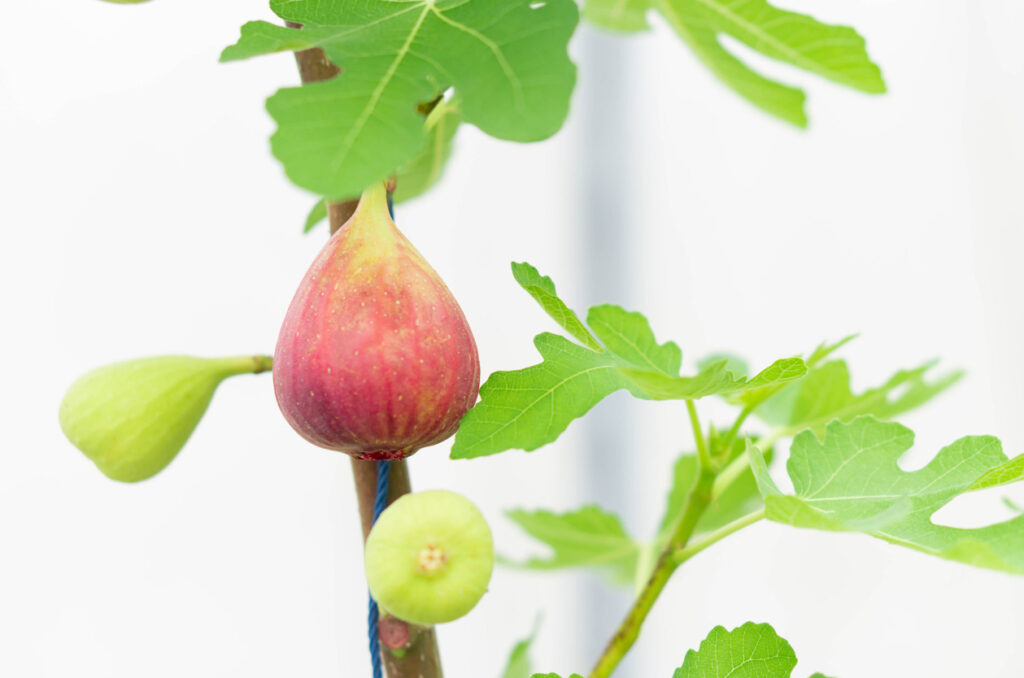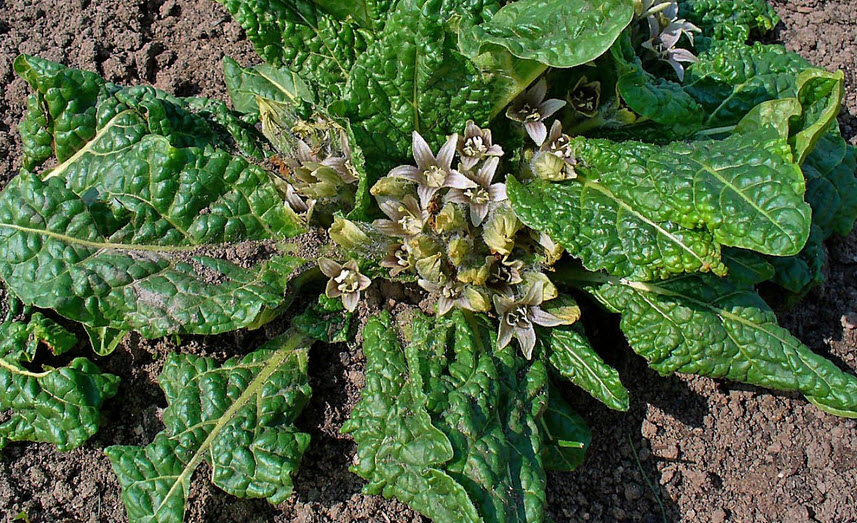These five medicinal herbs of the Bible have been used historically for their medicinal properties and continue to be of interest today.
5 Medicinal Herbs of the Bible
Here’s a summary of each:

The 5 Medicinal Herbs of the Bible
Fig (Ficus carica):
I hear you! Why are figs considered an herb? The short answer is: It is considered an herbal due to its traditional use in natural medicine. Back to the point…
In the Bible, figs were used for their nutritional value and potentially for medicinal purposes. Today, figs are recognized for their dietary benefits.
- Historical Uses: Traditionally, figs were valued for their nutritional benefits. They were thought to alleviate various ailments like digestive disorders.
- Current Benefits: Today, figs are known for their high fiber content, which aids digestion. They are rich in vitamins and minerals, such as vitamin A, B vitamins, calcium, iron, and potassium. Figs also have antioxidant properties and may contribute to heart health and blood sugar regulation.
- Growing Environment: Figs thrive in dry and sunny climates. They are native to the Middle East and western Asia but are now cultivated worldwide, especially in temperate regions.
- Appearance: Fig trees are deciduous and can grow up to 10 meters tall. They have large, lobed leaves that are rough to the touch. The fruit, also known as a fig, is pear-shaped and can vary in color from green to purple.
- Cultural Significance: The fig tree has many references in the Bible, symbolizing peace and prosperity. It was also one of the first plants mentioned in the Bible, in the Garden of Eden.
- Versatile Usage: Beyond medicinal use, figs were (and still are) a staple food item in many cultures. They can be eaten fresh, dried, or used in cooking and baking.
Nard (Nardostachys jatamansi):
Also known as spikenard, this herb was highly valued in ancient times for its aromatic properties. Nard oil, derived from the plant, is still used in traditional medicine, particularly in Ayurveda.
- Historical Uses: Nard, or spikenard, was used for its fragrance and was believed to have calming and soothing properties.
- Current Benefits: Currently, Nard is used in aromatherapy for its stress-relieving properties. It may also have neuroprotective effects and is used in traditional medicine to promote hair and skin health. Its potential anti-inflammatory and antioxidant effects are of interest in herbal medicine.
- Growing Environment: Nard, or spikenard, is native to the Himalayas of Nepal, China, and India. It grows at high altitudes of 3,000 to 5,000 meters.
- Appearance: This plant has a rosette of long, elliptical leaves at the base, from which a flowering spike emerges. The flowers are pink, bell-shaped, and clustered. The roots are thick, woody, and aromatic. (See an image here. )
- Historical Value: Nard was very expensive in ancient times, making it a luxury item. Its mention in the Bible during the anointing of Jesus highlights its value and significance.
- Aromatherapy: Its use in modern aromatherapy links back to its historical use for fragrance, indicating a long-standing appreciation of its soothing scent.
Hyssop (Origanum syriacum):

In the Bible, hyssop was used for purification rituals. Modern studies suggest that hyssop has various medicinal properties. It’s often still used in herbal medicine.
- Historical Uses: Hyssop was used in rituals, such as spiritual cleansing, redemption, purification. It was possibly also used for treating respiratory and digestive issues.
- Current Benefits: Modern research suggests hyssop has antiseptic, antiviral, and anti-inflammatory properties. It’s used in herbal remedies for respiratory conditions like bronchitis, asthma, and sore throat. Hyssop also aids digestion and may support immune health.
- Growing Environment: Hyssop is native to the Middle East and the regions surrounding the Mediterranean. It prefers dry, rocky soils and can be found in the wild on the sides of hills and mountains.
- Appearance: Hyssop plants are small, bushy herbs growing up to 60 cm tall. They have narrow, pointed leaves and produce clusters of small, blue or purple flowers on slender, upright stems.
- Ritual Use: In the Bible, hyssop was used in purification rituals, most notably in the Passover. This indicates its significance in religious and cultural practices.
- Culinary Uses: Today, hyssop is also used as a culinary herb, particularly in Middle Eastern cuisine, adding a minty, slightly bitter flavor to dishes.
Balm of Gilead (Commiphora gileadensis):
This is a term used for a healing compound made from resinous gum of trees, particularly the Commiphora species. In ancient times, it was used for its healing properties. Today, similar substances (like myrrh) from Commiphora trees are still used in traditional medicine.
- Historical Uses: This resin was used for its healing, anti-inflammatory, and analgesic properties.
- Current Benefits: Today, substances derived from Commiphora species (like myrrh) are used in natural medicine for similar reasons. They are believed to have anti-inflammatory and pain-relieving properties and are sometimes used in the treatment of arthritis, skin conditions, and muscle pain.
- Growing Environment: This plant is native to the Arabian Peninsula and parts of northern Africa. It grows in arid, desert-like conditions.
- Appearance: The Balm of Gilead is a small, thorny tree or shrub. It has trifoliate leaves (divided into three leaflets) and produces small, red to yellowish flowers. The valuable resin is obtained from the bark of the tree. (See image here.)
- Historical Trade: This resin was a valuable trade commodity in ancient times. It was so coveted that control over its production and trade routes often caused conflicts.
- Symbolic References: The “Balm of Gilead” is metaphorically used in literature and music to represent a universal cure, showing its deep-rooted symbolism in healing and comfort.
Mandrake (Mandragora officinarum):

H. Zell, CC BY-SA 3.0, via Wikimedia Commons
Known for its sedative and anesthetic properties in ancient times, mandrake was often used in medicinal practices. It contains alkaloids that can be potent and potentially toxic. While less commonly used today due to its potential toxicity, mandrake has historical significance in various cultural and medicinal contexts.
- Historical Uses: Mandrake was used as a sedative and anesthetic. Its roots, which contain hallucinogenic properties, were used in various rituals and treatments.
- Current Benefits: Due to its potent alkaloids, mandrake is less commonly used in modern herbal medicine. However, it has been of interest for its anticholinergic* properties, potentially useful in treating some symptoms of Parkinson’s disease and as an anesthetic. Its use is limited due to its high toxicity and potential side effects.
- Growing Environment: The mandrake is native to the Mediterranean region and parts of the Middle East. It prefers shady locations and is often found in undergrowth and woodlands.
- Appearance: Mandrake plants have large, rosette-forming leaves close to the ground. The flowers are bell-shaped, usually blue or violet, followed by yellow or orange berries. The root is large, often forked, and resembles the human figure, which has led to many superstitions and legends surrounding the plant.
- Mythical Associations: Due to its human-like root shape, mandrakes have been surrounded by superstition and folklore, often associated with magical practices and love potions.
- Literary Appearances: The mandrake appears in various literary works, including Shakespeare’s plays, as a symbol of mystery and enchantment, demonstrating its cultural impact beyond its medicinal use.
*Anticholinergics (anticholinergic agents) are substances that block the action of the neurotransmitter called acetylcholine (ACh) at synapses in the central and peripheral nervous system.
(With respect to the NIH study, which brought me to write about these medicinal herbs, you may want to check it out here.)
A Quick Sidetrack from the 5 Medicinal Herbs of the Bible…
During my research for this post, I ran across an article that made me curious, though skeptical. I looked into it further.
The idea presented was that the gold gift of the three offered by the Wise Men at the birth of Jesus, was actually turmeric. Now, since turmeric is known for its vibrant yellow color and medicinal properties, it seemed an interesting thought.
Turns out, this is not supported by historical or biblical texts.
In the biblical account, specifically in the Gospel of Matthew, the three gifts given by the Wise Men (Magi) to Jesus are specifically named as gold, frankincense, and myrrh. These gifts are symbolic, with gold often representing Jesus’ kingship, frankincense his priestly role, and myrrh his suffering and death.
- Gold is a precious metal and has been valued highly across cultures for millennia.
- Frankincense is a resin obtained from the Boswellia tree, used in incense and perfumes.
- Myrrh is a resin extracted from the Commiphora tree, used in perfuming and anointing oils, and also for medicinal purposes.
I couldn’t help myself! I had to see this through. Okay. So, let’s finish up now…
The 5 Medicinal Herbs of the Bible
Each of these herbs not only has a rich history in terms of medicinal use but also holds significant cultural, religious, and literary importance, reflecting the multifaceted role plants have played in human society throughout history.
Today, while these herbs have historical significance for various health benefits, their use is often nuanced and limited by modern medical understanding and concerns about safety and efficacy.
Lastly, and as always, remember it’s important to consult healthcare professionals before using any herbs for medicinal purposes.
